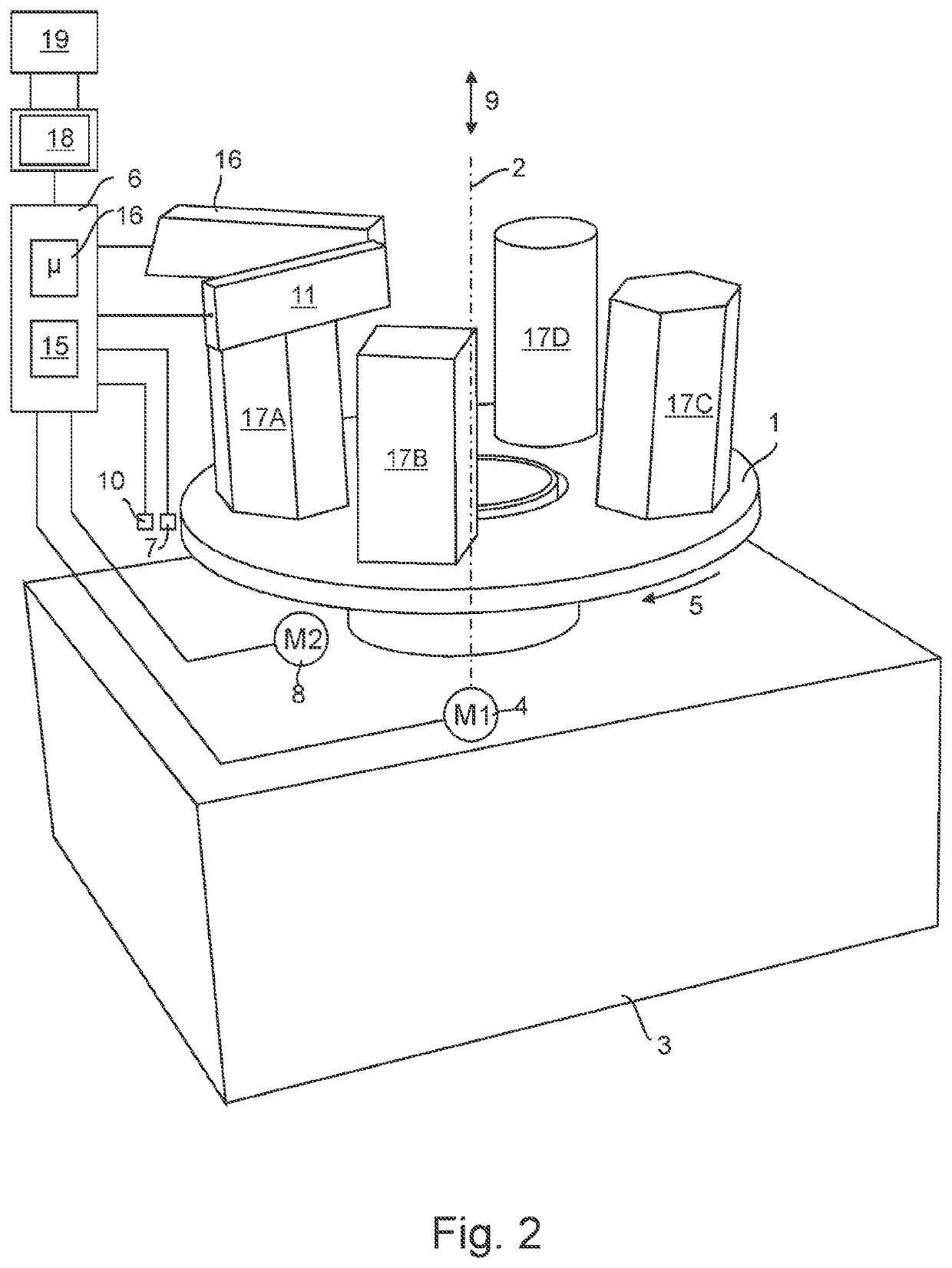Method for Producing At Least One Solid-Body Layer on a Support That Can Rotate About an Axis of Rotation
- Summary
- Abstract
- Description
- Claims
- Application Information
AI Technical Summary
Benefits of technology
Problems solved by technology
Method used
Image
Examples
Embodiment Construction
[0077]In the case of a method for layer-by-layer production of a solid-body shaped object on a support 1 that can be rotated about an axis of rotation 2, in accordance with predetermined geometry data, a rotary disk in the shape of a circular ring, which has the support 1, is provided, which disk is mounted so that it can be rotated about a vertical axis of rotation 2, on a holder 3 that is fixed in place (FIGS. 1 and 2). The holder 3 has a standing surface on its underside, by means of which it can be set up on a tabletop or on the floor of a room, for example.
[0078]The support 1 stands in a drive connection with a first positioning device that has a first drive motor 4, by means of which the support 1 can be driven to rotate in the direction of the arrow 5 and can be positioned in accordance with a rotational position reference value signal that is provided by a control device 6. For this purpose, the first drive motor 5 is connected with a first position regulator integrated into...
PUM
| Property | Measurement | Unit |
|---|---|---|
| Fraction | aaaaa | aaaaa |
| Fraction | aaaaa | aaaaa |
| Thickness | aaaaa | aaaaa |
Abstract
Description
Claims
Application Information
 Login to View More
Login to View More - R&D
- Intellectual Property
- Life Sciences
- Materials
- Tech Scout
- Unparalleled Data Quality
- Higher Quality Content
- 60% Fewer Hallucinations
Browse by: Latest US Patents, China's latest patents, Technical Efficacy Thesaurus, Application Domain, Technology Topic, Popular Technical Reports.
© 2025 PatSnap. All rights reserved.Legal|Privacy policy|Modern Slavery Act Transparency Statement|Sitemap|About US| Contact US: help@patsnap.com



